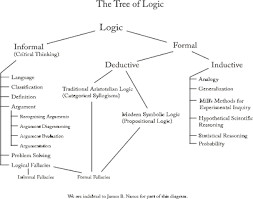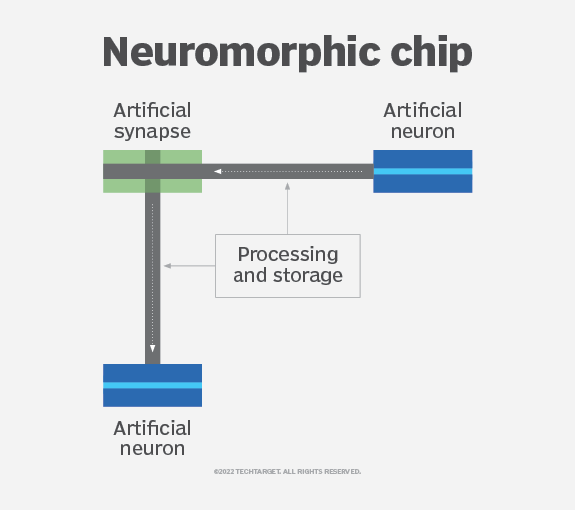Dec
21
2023
 This is not exactly a “best of” because I don’t know how that applies to science news, but here are what I consider to be the most impactful science news stories of 2023 (or at least the ones that caught by biased attention).
This is not exactly a “best of” because I don’t know how that applies to science news, but here are what I consider to be the most impactful science news stories of 2023 (or at least the ones that caught by biased attention).
This was a big year for medical breakthroughs. We are seeing technologies that have been in the works for decades come to fruition with specific applications. The FDA recently approved a CRISPR treatment for sickle cell anemia. The UK already approved this treatment for sickle cell and beta thalassemia. This is the first CRISPR-based treatment approval. The technology itself is fascinating – I have been writing about CRISPR since it was developed, it’s a technology for making specific alterations to DNA at a specific target site. It can be used to permanently inactivate a gene, insert a new gene, or reversibly turn a gene off and then on again. Importantly, the technology is faster and cheaper than prior technologies. It is a powerful genetics research tool, and is a boon to genetic engineering. But since the beginning we have also speculated about its potential as a medical intervention, and now we have proof of concept.
The procedure is to take bone-marrow from the patient, then use CRISPR to silence a specific gene that turns off the production of fetal hemoglobin. The altered blood stem cells are then transplanted back into the patient. Both of these diseases, sickle cell and thalassemia, are genetic mutations of adult hemoglobin. The fetal hemoglobin is unaffected. By turning back on the production of fetal hemoglobin, this effectively reduces or even eliminates the negative effects of the mutations. Sickle cell patients do not go into crisis and thalassemia patients do not need constant blood transfusions.
This is an important milestone – we can control the CRISPR technique sufficiently that it is a safe and effective tool for treating genetically based diseases. This does not mean we can now cure all genetic diseases. There is still the challenge of getting the CRISPR to the right cells (using some vector). Bone-marrow based disease is low hanging fruit because we can take the cells to the CRISPR. But still – this is a lot of potential disease targets – anything blood or bone marrow based. Also, any place in the body where we can inject CRISPR into a contained space, like the eye, is an easy target. Other targets will not be as easy, but that technology is advancing as well. This all opens up a new type of medical intervention, through precise genetic alteration. Every future story about this technology will likely refer back to 2023 as the year of the first approved CRISPR treatment.
Continue Reading »
Dec
19
2023
 One of the biggest questions of exoplanet astronomy is how many potentially habitable planets are out there in the galaxy. By one estimate the answer is 6 billion Earth-like planets in the Milky Way. But of course we have to set parameters and make estimates, so this number can vary significantly depending on details.
One of the biggest questions of exoplanet astronomy is how many potentially habitable planets are out there in the galaxy. By one estimate the answer is 6 billion Earth-like planets in the Milky Way. But of course we have to set parameters and make estimates, so this number can vary significantly depending on details.
And yet – how many exoplanets have we discovered so far that are “Earth-like”, meaning they are a rocky world orbiting a sun-like star in the habitable zone, not tidally locked to their parent star, with the potential for liquid water on the surface? Zero. Not a single one, out of the over 5,500 exoplanets confirmed so far. This is not a random survey, however, because it is biased by the techniques we use to discover exoplanets, which favor larger worlds and worlds closer to their stars. But still, zero is a pretty disappointing number.
I am old enough to remember when the number of confirmed exoplanets was also zero, and when the first one was discovered in 1995. Basically since then I have been waiting for the first confirmed Earth-like exoplanet. I’m still waiting.
A recent simulation, if correct, may mean there are even fewer Earth-like exoplanets than we think. The study looks at the transition from a planet like Earth to one like Venus, where a runaway greenhouse effect leads to a dry and sterile planet with a surface temperature of hundreds of degrees. The question being explored by this simulation is this – how delicate is the equilibrium we have on Earth? What would it take to tip the Earth into a similar climate as Venus? The answer is – not much.
Continue Reading »
Dec
18
2023
 Even high quality media outlets will get it wrong from time to time. I notice this tends to happen when there is a mature and sophisticated propaganda campaign that has had enough time and reach to essentially gaslight a major portion of the public, and further where a particular expertise is required to understand why the propaganda is false. This is true, for example, for acupuncture, where even medical experts don’t have sufficient topic expertise to know why the claims being made are largely pseudoscience.
Even high quality media outlets will get it wrong from time to time. I notice this tends to happen when there is a mature and sophisticated propaganda campaign that has had enough time and reach to essentially gaslight a major portion of the public, and further where a particular expertise is required to understand why the propaganda is false. This is true, for example, for acupuncture, where even medical experts don’t have sufficient topic expertise to know why the claims being made are largely pseudoscience.
Where there is arguably the biggest gap between the scientific evidence and public opinion is genetically modified organisms (GMOs). There has been a well-funded and unfortunately successful campaign to unfairly and unscientifically demonize GMO technology, largely funded by the organic lobby but also environmental groups. Scientific pushback has ameliorated this somewhat. Further, the more time that goes by without the predicted “GMO apocalypse” the less urgent the fearmongering seems. Plus, genetic engineering works and is safe and is producing results, and people may be just getting more comfortable with it over time.
But it seems to me that there are still some people who are stuck in the anti-GMO narrative, and they are making increasingly poor and unconvincing arguments to sustain their negative attitude. An example is a recent article in The Conversation – Genetically modified crops aren’t a solution to climate change, despite what the biotech industry says. The article is by Barbara Van Dyck, who is a long time anti-GMO activist, even participating in disruptions of field trials. Let’s dive into her recent article.
Continue Reading »
Dec
15
2023
 I like to think deeply about informal logical fallacies. I write about them a lot, and even have an occasional segment of the SGU dedicated to them. They are a great way to crystalize our thinking about the many ways in which logic can go wrong. Formal logic deals with arguments that are always true, by there very construction. If A=B and B=C then A=C, is always true. Informal logical fallacies, on the other hand, are context dependent. They are a great way to police the sharpness of arguments, but they require a lot of context-dependent judgement.
I like to think deeply about informal logical fallacies. I write about them a lot, and even have an occasional segment of the SGU dedicated to them. They are a great way to crystalize our thinking about the many ways in which logic can go wrong. Formal logic deals with arguments that are always true, by there very construction. If A=B and B=C then A=C, is always true. Informal logical fallacies, on the other hand, are context dependent. They are a great way to police the sharpness of arguments, but they require a lot of context-dependent judgement.
For example, the Argument from Authority fallacy recognizes that a fact claim is not necessarily true just because an authority states it, but it could be true. And recognizing meaningful authority is useful, it’s just not absolute. It’s more of a probability and the weight of opinion. But authority itself does not render a claim true or false. The same is true of the Argument ad Absurdum, or the Slippery Slope fallacy – they are about taking an argument to an unjustified extreme. But what’s “extreme”? This subjectivity might cause one to think that they are therefore not legitimate logical fallacies at all, but that’s just the False Continuum logical fallacy – the notion that if there is not a sharp demarcation line somewhere along a spectrum, then we can ignore or deny the extremes of the spectrum.
I recently received the following question about a potential informal fallacy:
I’ve noticed this more and more with politics. Party A proposes a ludicrous solution to an issue. Party B objects to the policy. Party A then accuse Party B of being in favour of the issue. It’s happening in the immigration debate in the UK where the government are trying to deport asylum seekers to Rwanda (current capacity around 200 per year) in order to solve our “record levels of immigration” (over 700,000 this year of which less than 50,000 are asylum seekers). When you object to the policy you are accused of being in support of unlimited immigration.
This feels like something wider, that may even be a logical fallacy, but I’ve not been able to locate anything describing it. I can imagine it comes up in Skepticisim relatively often.
Continue Reading »
Dec
14
2023
 Australian researchers at the International Centre for Neuromorphic Systems (ICNS) at Western Sydney University have announced they are building what they are calling Deep South (based on IBM’s Deep Blue). This will be the world’s largest neuromorphic supercomputer, with 228 trillion synaptic operations per second. This won’t be the fastest supercomputer in the world, which is currently reaching the exascale with quintillions of operations per second. So then what’s the big deal? It probably has something to do with the “neuromorphic” part.
Australian researchers at the International Centre for Neuromorphic Systems (ICNS) at Western Sydney University have announced they are building what they are calling Deep South (based on IBM’s Deep Blue). This will be the world’s largest neuromorphic supercomputer, with 228 trillion synaptic operations per second. This won’t be the fastest supercomputer in the world, which is currently reaching the exascale with quintillions of operations per second. So then what’s the big deal? It probably has something to do with the “neuromorphic” part.
The basic definition of a neuromorphic computer is one based on or inspired by the design of biological systems – something more closely resembling neurons and synapses. Conventional computers have central processing units and separate memory storage. But they seem to get the job done. Neuromorphic computers have components that function more like neurons and synapses which are both memory and processing at the same time. Also, the process is massively parallel and distributed. But if this is not necessarily faster than conventional computers, why bother?
There are two reasons, but the first is efficiency. The human brain is a powerful computer, and yet it operates only 20 watts of power. That is incredibly more energy efficient than any computer, and researchers believe this is because of the architecture. Right now specific computer applications use the energy of small countries. Crypto uses 127 terawatt hours per year, more than Norway. Data centers use 340 TWh. A Chat GPT query uses 15 times the energy as a normal Google query, and again is already getting to small-country levels of energy use. The AI revolution, whatever else you may think about it, is energy hungry.
Continue Reading »
Dec
12
2023
 Scientists have developed virtual reality goggles for mice. Why would they do this? For research. The fact that it’s also adorable is just a side effect.
Scientists have developed virtual reality goggles for mice. Why would they do this? For research. The fact that it’s also adorable is just a side effect.
One type of neuroscience research is to expose mice in a laboratory setting to specific tasks or stimuli while recording their brain activity. You can have an implant, for example, measure brain activity while it runs a maze. However, having the mouse run around an environment puts limits on the kind of real time brain scanning you can do. So researchers have been using VR (virtual reality) for about 15 years to simulate an environment while keeping the mouse in a more controlled setting, allowing for better brain imaging.
However, this setup is also limiting. The VR is really just surrounding wrap-around screens. But it is technically challenging to have overhead screens, because that is where the scanning equipment is, and there are still visual clues that the mouse is in a lab, not the virtual environment. So this is an imperfect setup. k
The solution was to build tiny VR goggles for mice. The mouse does not wear the goggles like a human wears a VR headset. They can’t get them that small yet. Rather, the goggles are mounted, and the mouse is essentially placed inside the goggle while standing on a treadmill. The mouse can therefore run around while remaining stationary on the treadmill, and keep his head in the mounted VR goggles. This has several advantages over existing setups.
Continue Reading »
Dec
11
2023

Not a crow.
One of the core tenets of scientific skepticism is what I call neuropsychological humility – the recognition that while the human brain is a powerful information processing machine, it also has many frailties. One of those frailties is perception – we do not perceive the world in a neutral or objective way. Our perception of the world is constructed from multiple sensory streams processed together and filtered through internal systems that include our memories, expectations, biases, assumptions and (critically) attention. In many ways, we see what we know, what we are looking for, and what we expect to see. Perhaps the most internet-famous example of this is the invisible gorilla, a dramatic example of inattentional blindness.
Far more subtle is what might be called cultural blindness – we can perceive differences that we already know exist or with which we are very familiar, but otherwise may miss differences as a background blur. On my personal intellectual journey, one dramatic example I often refer to is my perception before and after becoming a birder. For most of my life birds were something in the background I paid little attention to. My internal birding map consisted of a few local species and broad groups. I could recognize cardinals, blue jays, crows, pigeons, and mourning doves. Any raptor was a “hawk”. There were ducks and geese, and then there was – everything else. I would probably call any small bird a sparrow, if I thought to call it anything at all. I knew of other birds from nature shows, but they were not part of my world.
The birding learning curve was very steep, and completely changed my perception. What I called “crows” consisted not only of crows but ravens and at least two types of grackle. I can identify the field markings of several hawks and two vultures. I can tell the subtle differences between a downy and hairy woodpecker. At first I had difficulty telling a chickadee from a nuthatch, now the difference is obvious. I can even tell some sparrow species apart. My internal birding map is vastly different, and that affects how I perceive the world.
Continue Reading »
Dec
08
2023
 Remember the 1980 film, The Formula? Probably not, because it was a mediocre film that did not age well. The basic plot is that Nazi chemists during WWII developed a formula for synthetic gasoline. A detective investigating a murder gets embroiled in a conspiracy to cover up the existence of this formula, and he struggles to expose it to the world, but is ultimately foiled by the many layers of this conspiracy. At the heart of the conspiracy is the fossil fuel industry, who wants to protect their golden goose. I remember thinking at the time that this was dumb, and now I appreciate how dumb it is on a much deeper level.
Remember the 1980 film, The Formula? Probably not, because it was a mediocre film that did not age well. The basic plot is that Nazi chemists during WWII developed a formula for synthetic gasoline. A detective investigating a murder gets embroiled in a conspiracy to cover up the existence of this formula, and he struggles to expose it to the world, but is ultimately foiled by the many layers of this conspiracy. At the heart of the conspiracy is the fossil fuel industry, who wants to protect their golden goose. I remember thinking at the time that this was dumb, and now I appreciate how dumb it is on a much deeper level.
There is a scientific and critical thinking layer to the superficial thoughtlessness of this plot. From a critical thinking perspective, a conspiracy to suppress such a formula makes no sense. Such a formula (if we buy the premise of such a thing, which I don’t, as you will see) would be incredibly valuable to anyone who controls it. An oil company could (again, given the film’s premise) in a single stroke dominate the world’s energy production and crush the competition. But perhaps more critically, it makes no sense that such a formula would have been discovered almost 40 years prior to the timeframe of the film and yet was never reproduced. Have you every noticed that for any significant invention there are often a host of people claiming they really invented it. That’s because they likely did, or at least contributed to the invention. When our science and technology are at a point where a breakthrough is possible, it is likely that many people/labs/companies/nations will converge on the discovery at roughly the same time.
However, popular culture is stuck in the “lone genius” narrative, thinking of scientific breakthroughs as the unique product of a singular genius. This is just not how science typically works. Increasingly, it is a tangled web of collaboration with many players each contributing incrementally to an overall progress. Major inventions are “ripe”, and they have a paper trail. The notion that Nazi chemists were decades ahead of the rest of the world in such an immense technology is not plausible.
But even more fatal to the plot of this film is the premise of the title – that the limiting factor in the ability to fuel the world with synthetic gasoline is knowing the proper formula. Having a chemical formula for synthesizing hydrocarbons is not the tricky part. Whenever dealing with any energy technology, I find it extremely useful to ask the basic question – where is the energy coming from? If you don’t have a very thorough answer to this question, be skeptical.
Continue Reading »
Dec
05
2023
 One of the greatest mysteries of modern science is how to unite the two overarching theories of physics – quantum mechanics and general relativity. If physicists could somehow unite these two theories, which currently do not play well together, then we might get to a deeper “one theory to rule them all.”
One of the greatest mysteries of modern science is how to unite the two overarching theories of physics – quantum mechanics and general relativity. If physicists could somehow unite these two theories, which currently do not play well together, then we might get to a deeper “one theory to rule them all.”
Quantum mechanics essentially says that we do not live in a classical universe. Classical physics as it operates on the macroscopic scale is just the surface level, the end result of a quantum universe at the near atomic and smaller scale. At the quantum scale (not to be confused with the Quantum Realm fantasy of Marvel – don’t get me started), reality is quantized and probabilistic. Things that seem like magic on the macro scale are reality at the quantum scale, like wave particle duality and entanglement.
General relativity, rather, deals with the super big scale, spacetime itself. Einstein postulated that gravity is the result of spacetime being curved. Freely moving objects actually always travel in a straight line, but through curved space. Mass curves space, which is how mass creates gravity. This is, as least, a reasonable lay person’s understanding of these concepts.
Continue Reading »
Dec
04
2023
 One of my favorite recent video games is Subnautica, in which you have to survive almost entirely under a vast alien ocean. You have the advantage of advanced technology, but even then you are under constant threat of running out of oxygen, or having your habitat implode because it was not sufficiently reinforced. You are mostly working in brief increments and shallow depths.
One of my favorite recent video games is Subnautica, in which you have to survive almost entirely under a vast alien ocean. You have the advantage of advanced technology, but even then you are under constant threat of running out of oxygen, or having your habitat implode because it was not sufficiently reinforced. You are mostly working in brief increments and shallow depths.
That is similar to reality. Underwater is an extremely challenging environment, and human researchers do most of their work in brief increments and shallow depths. It says something that we have a continuous human presence in space, but not underwater. Some of the challenges are similar. You need a protected environment that is largely self-sufficient, at least for long periods of time. You need to provide heat and oxygen, and deal with changes in pressure. Of course, in space the problem is the lack of pressure outside the space station, while under water the challenge is increased pressure. This is actually far more of a challenge underwater, as the deeper you go the pressure difference from inside to out can be far greater than in space. Underwater you also have to deal with the corrosive effects of salt water.
A company, Deep, plans to have long term continuous human habitation under the ocean for the first time, with their Sentinel habitat. This will allow up to six people to live at 200 meters under the ocean for up to 28 days at a time. They plan on deploying the crew in November 2026. The Sentinel will be 400 cubic meters in size, with modules 6.2 meters in diameter – that is about the same diameter as a 777 fuselage. Imagine living in a space the size of a large jet for 28 days. By all accounts the space will be nice, but that is still cramped an isolating.
Continue Reading »
 This is not exactly a “best of” because I don’t know how that applies to science news, but here are what I consider to be the most impactful science news stories of 2023 (or at least the ones that caught by biased attention).
This is not exactly a “best of” because I don’t know how that applies to science news, but here are what I consider to be the most impactful science news stories of 2023 (or at least the ones that caught by biased attention).
 One of the biggest questions of exoplanet astronomy is how many potentially habitable planets are out there in the galaxy.
One of the biggest questions of exoplanet astronomy is how many potentially habitable planets are out there in the galaxy.  Even high quality media outlets will get it wrong from time to time. I notice this tends to happen when there is a mature and sophisticated propaganda campaign that has had enough time and reach to essentially gaslight a major portion of the public, and further where a particular expertise is required to understand why the propaganda is false. This is true, for example,
Even high quality media outlets will get it wrong from time to time. I notice this tends to happen when there is a mature and sophisticated propaganda campaign that has had enough time and reach to essentially gaslight a major portion of the public, and further where a particular expertise is required to understand why the propaganda is false. This is true, for example,  I like to think deeply about
I like to think deeply about  Australian researchers at the International Centre for Neuromorphic Systems (ICNS) at Western Sydney University
Australian researchers at the International Centre for Neuromorphic Systems (ICNS) at Western Sydney University  Scientists have developed
Scientists have developed 
 Remember the 1980 film,
Remember the 1980 film,  One of the greatest mysteries of modern science is how to unite the two overarching theories of physics – quantum mechanics and general relativity. If physicists could somehow unite these two theories, which currently do not play well together, then we might get to a deeper “one theory to rule them all.”
One of the greatest mysteries of modern science is how to unite the two overarching theories of physics – quantum mechanics and general relativity. If physicists could somehow unite these two theories, which currently do not play well together, then we might get to a deeper “one theory to rule them all.” One of my favorite recent video games is Subnautica, in which you have to survive almost entirely under a vast alien ocean. You have the advantage of advanced technology, but even then you are under constant threat of running out of oxygen, or having your habitat implode because it was not sufficiently reinforced. You are mostly working in brief increments and shallow depths.
One of my favorite recent video games is Subnautica, in which you have to survive almost entirely under a vast alien ocean. You have the advantage of advanced technology, but even then you are under constant threat of running out of oxygen, or having your habitat implode because it was not sufficiently reinforced. You are mostly working in brief increments and shallow depths.




